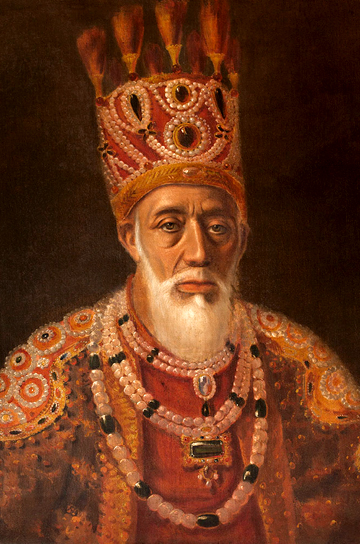
Akbar Shah II (1760–1837 CE) was the second last Mughal Emperor of India, holding the title from 1806 to 1837. He was the second son of Shah Alam II and the father of Bahadur Shah Zafar II. With the increasing control of the Empire through the East India Company, Akbar had modest powers as an emperor. During his regime, in 1835, the East India Company discontinued calling itself the lieutenant of the Mughal Emperor and issuing coins in his name.
The painting represents the emperor in his refined age with prominence given to his white beard and moustache. With sunken eyes, attention is drawn to his age which has witnessed several experiences he must have had as a reigning emperor.
Seen in an apt persona of the ruler, he is enormously bejewelled with pearls and precious stones, adorning his attire and body. Drooping shoulders lay emphasis on the intricate embroidery on his purple choga, worn over crimson jora. The elaborate headgear follows conventional rows of pearls which visibly appear as an extension to the pearls worn around the neck in a rhythmic manner. Huge red stones gleam through the headgear with red plumes surmounting them on the top.








